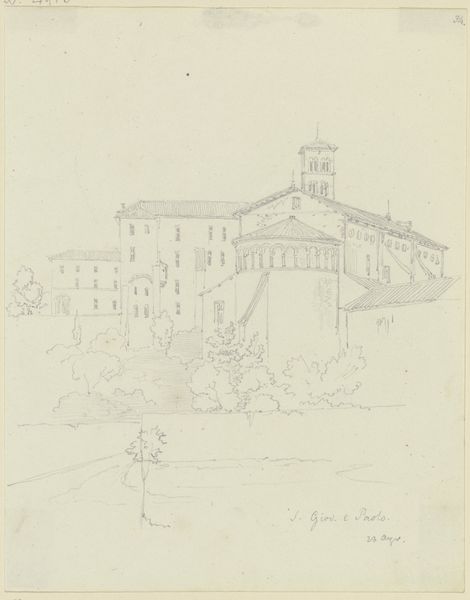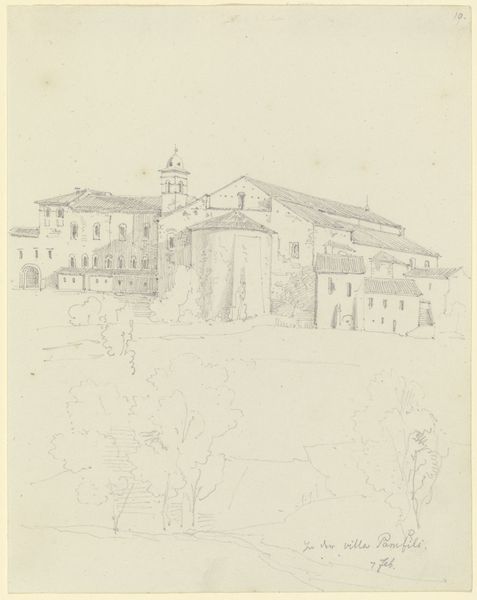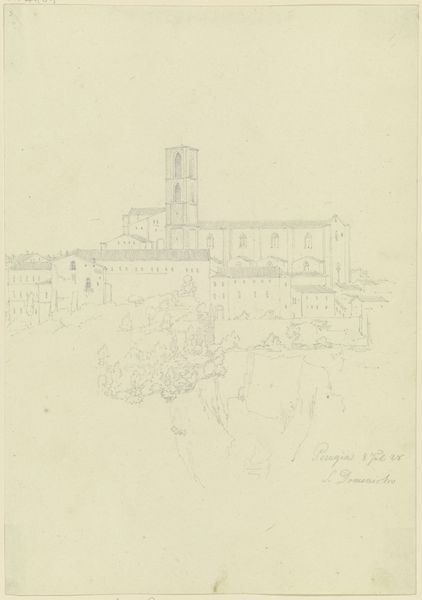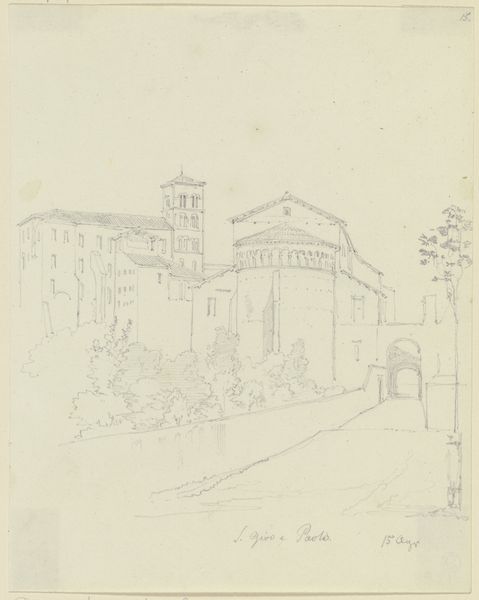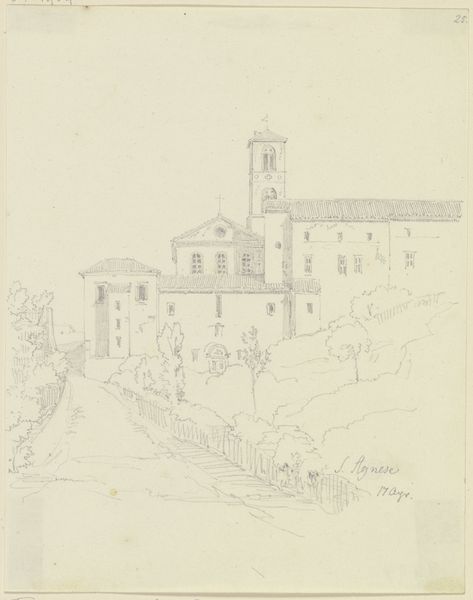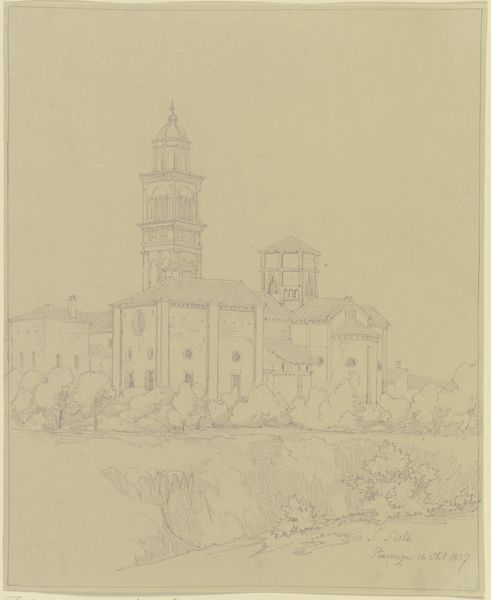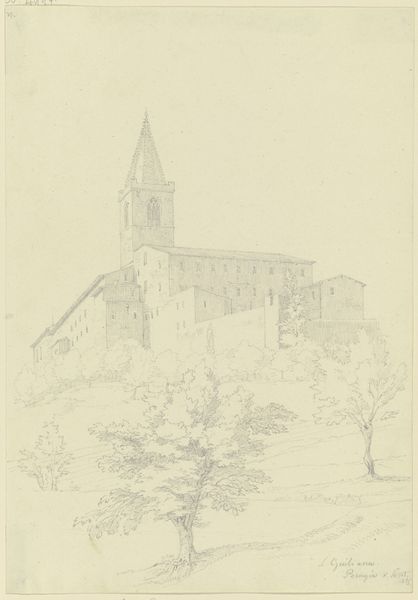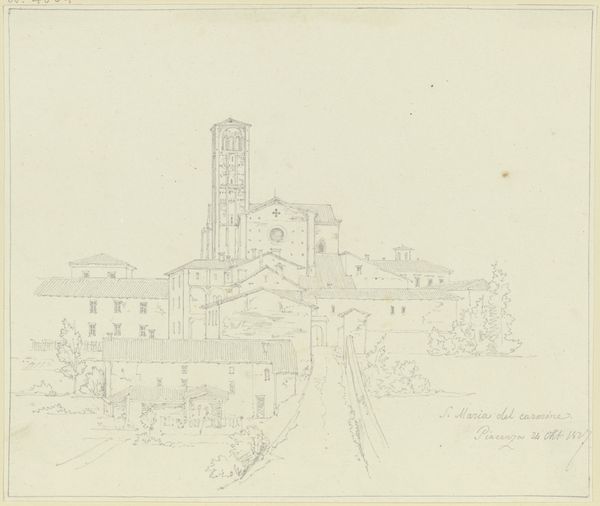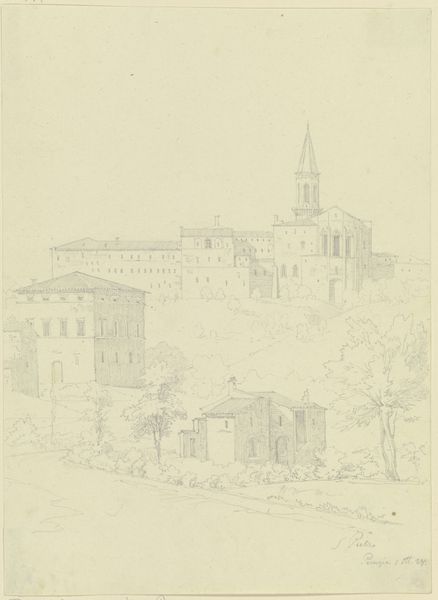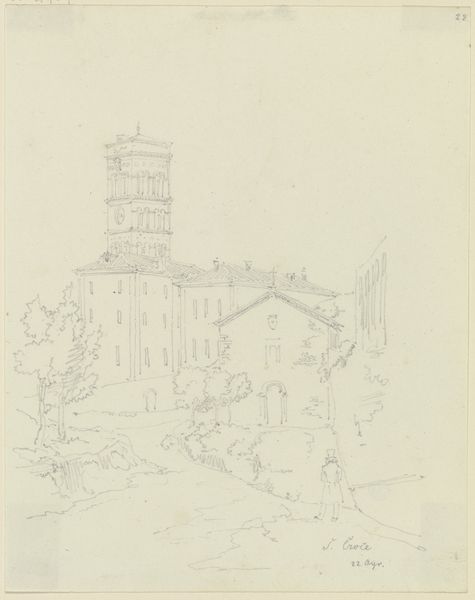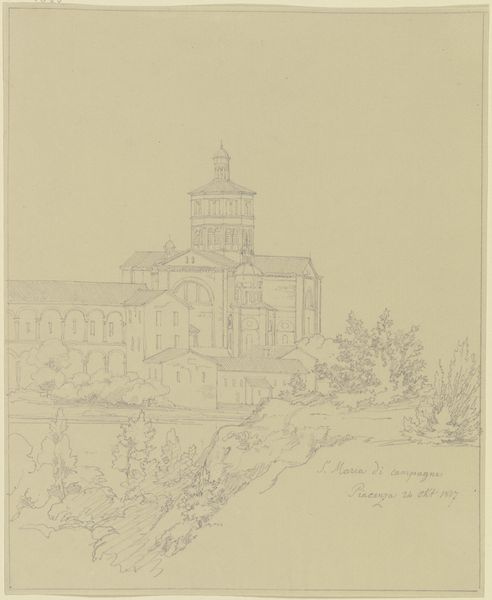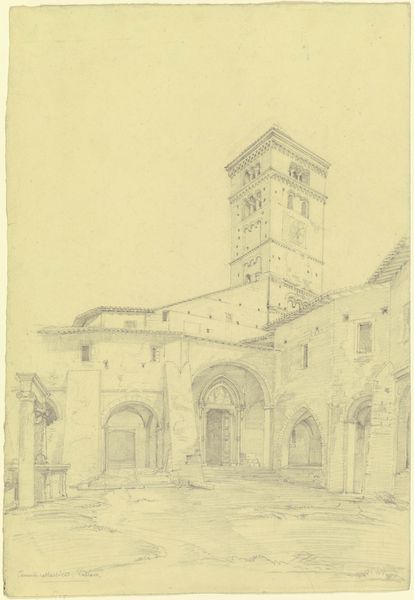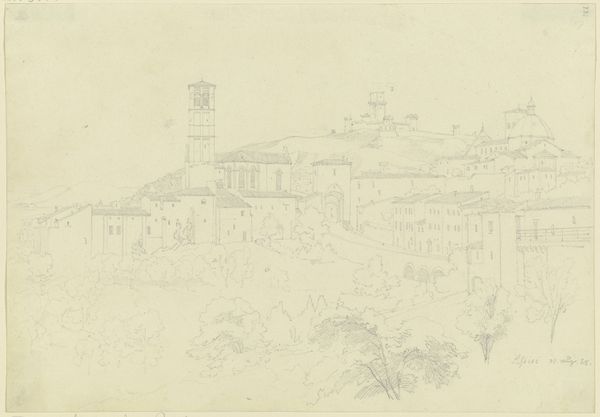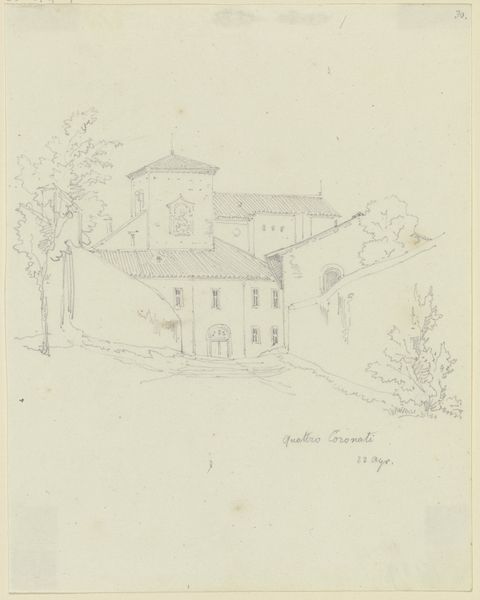
Copyright: Public Domain
Curator: We’re looking at Friedrich Maximilian Hessemer's "S. Domenico in Perugia," made around 1821-1828. It's currently housed in the Städel Museum. The work primarily employs pencil and etching in capturing this architectural subject. Editor: My immediate reaction is the sketch’s fragility. It feels so tentative, like a fleeting thought captured on paper. The delicate lines create this airy, almost dreamlike quality, contrasting with the solid permanence of the building depicted. Curator: That tension between solidity and ephemerality is really interesting. Hessemer's neoclassicism roots the artwork within this 19th-century trend toward order, symmetry, and rational design. This aesthetic connected itself to particular ideological meanings. Editor: Exactly. Though the neoclassical style intends to demonstrate rationality and order, to my eye, the softness and openness hint at the subjective, the internal world, and invite questions. This resonates powerfully today as so much religious architecture carries a history of exclusive practice. What sociopolitical agendas were intertwined within the design of S. Domenico? Curator: Its purpose speaks to that question: S. Domenico was originally a significant Dominican monastery and church. These architectural plans reflect a societal push towards a renewed sense of civic pride. Editor: I see that. The drawing serves as a valuable historical document, opening discussions about how social power translates into urban landscapes. The softness of the etching seems less like a design element and more of an exposure of its political meaning. Curator: The detail certainly invites reflection, as a meditation on our connection with architectural environments. Editor: I completely agree. This understated etching is more intricate than meets the eye, bringing forward crucial discussion around urban narratives and architectural heritage.
Comments
No comments
Be the first to comment and join the conversation on the ultimate creative platform.
